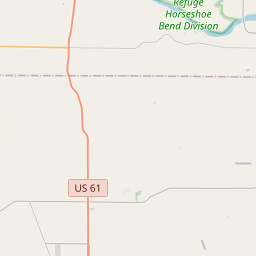Yellow Spring Township Civil War Monument
Historical marker location:





April 12, 1861: The Civil War begins with the Confederate attack on Fort Sumter, located in South Carolina's Charleston Harbor.
April 15, 1861: President Abraham Lincoln issues a call for 75,000 volunteers to serve in the Union Army to suppress the rebellion.
May 24, 1861: The first major land battle, known as the First Battle of Bull Run (or First Battle of Manassas), takes place in Virginia. It ends in Confederate victory.
September 17, 1862: The Battle of Antietam in Maryland becomes the bloodiest single-day battle in American history, with heavy casualties on both sides. The Union forces, commanded by General George McClellan, manage to halt Confederate General Robert E. Lee's advance into Union territory.
January 1, 1863: President Lincoln issues the Emancipation Proclamation, declaring that all slaves in Confederate-held territories are to be set free. However, the proclamation does not immediately free all slaves in the United States.
July 1-3, 1863: The Battle of Gettysburg in Pennsylvania takes place, resulting in a significant Union victory and inflicting heavy casualties on Confederate forces. It marks a turning point in the war.
November 19, 1863: President Lincoln delivers the Gettysburg Address, emphasizing the principles of liberty, equality, and the preservation of the Union.
April 9, 1865: General Robert E. Lee surrenders to Union General Ulysses S. Grant at Appomattox Court House in Virginia, effectively ending the Civil War.
April 14, 1865: President Lincoln is assassinated by John Wilkes Booth while attending a play at Ford's Theatre in Washington, D.C.
May 10, 1865: Confederate President Jefferson Davis is captured, signaling the collapse of the Confederate government.
December 6, 1865: The Thirteenth Amendment to the United States Constitution is ratified, officially abolishing slavery throughout the country.
While this timeline provides an overview of key events, it is important to note that the Civil War spanned over four years, from 1861 to 1865, and encompassed numerous battles, campaigns, and political developments that shaped the course of American history.
Iowa is home to the world's largest strawberry, which is located in Strawberry Point. The 15-foot-tall fiberglass strawberry was erected in 1967 and has since become a beloved landmark in the community.
The county was officially established in 1834 and named after the Des Moines River, which flows through it. The city of Burlington, known as the "Old Capital of Iowa," was selected as the county seat. Burlington quickly grew into a thriving trading center, with steamboats bringing goods up and down the Mississippi River. It became an important hub for commerce and transportation in the region.
During the mid-19th century, Des Moines County played a significant role in the development of Iowa. It became a stagecoach stop on the historic Burlington-Mississippi Road, connecting the region to the western territories. In 1853, the largest stone building in the state, the Iowa State Penitentiary, was constructed in Fort Madison, providing employment opportunities for residents.
As the 20th century dawned, Des Moines County continued to flourish. The growing agricultural sector, with the fertile lands along the Mississippi River, contributed to its economic growth. The county also experienced industrial development, with manufacturing plants, including a major button factory and a cereal mill, employing a significant portion of the population.
Today, Des Moines County is a thriving community with a diverse economy and a range of recreational and cultural attractions. It boasts a blend of historical landmarks, natural beauty, and a strong sense of community pride. The county continues to embrace its rich heritage while looking towards a promising future.
Des Moines County Timeline
This timeline provides a glimpse into the major events and milestones that have shaped the history of Des Moines County, Iowa.
- 1833 - Des Moines County is established by the Iowa Territorial Legislature.
- 1834 - Burlington becomes the county seat.
- 1850 - The railroad arrives in the county, boosting economic growth.
- 1894 - The Great Western Sugar Company is founded in Burlington.
- 1911 - The Drake Clock Tower is built in Burlington, becoming a well-known landmark.
- 1933 - Southeast Iowa Regional Airport is established.
- 2008 - The Iowa Fertilizer Company announces plans for a large fertilizer plant in Wever.